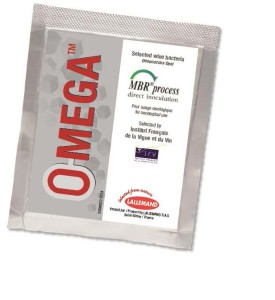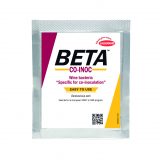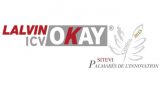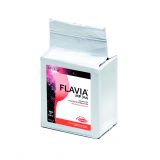BETA CO-INOC™
BETA CO-INOC selected by Lallemand is the malolactic bacteria known for synergy and reliable performance when used for co-inoculation. Co-inoculation, when the juice/must is inoculated with malolactic bacteria 24 to 48 hours after yeast inoculation, is an effective winemaking option with economic advantages. After several years of research on malolactic bacteria and the timing of inoculations, co-inoculation is now recognized as a simple and safe practice for the management of malolactic fermentation (MLF) for the optimization of wine quality.
LALVIN ICV OKAY®
Control sulfur compound production during fermentation. The new wine yeast, LALVIN ICV OKAY®, received a Citation Award in the category of Innovation from SITEVI 2013. The innovation is based on successive back-crossing between an excellent fermenting wine yeast and a yeast with very low production of sulfur compounds such as H2S. The resulting LALVIN ICV OKAY ® yeast combines reliable fermentation performance and very low production of SO2, H2S and acetaldehyde.
Level2™ Solutions: non-traditional yeast for use in sequential inoculation Flavia™
Metschnikowia pulcherrima yeast selected by the Universidad de Santiago de Chile for its specific capacity to release arabinofuranosidase activity. When used in sequential inoculation with a compatible selected Saccharomyces cerevisiae yeast strain, FLAVIA™ will impact the production of such varietal aromas as terpenes and volatile thiols in Riesling and Sauvignon blanc.
O-MEGA™: much more than a New Wine Bacteria, a strong ally for malolactic fermentation
 The Institut Français de la Vigne et du Vin (IFV), in partnership with Lallemand Oenology, has selected, over a four-year period, a new wine bacteria – O-MEGA™ – that is both vigorous and versatile and brings fruity freshness to white, rosé and red wines.
The Institut Français de la Vigne et du Vin (IFV), in partnership with Lallemand Oenology, has selected, over a four-year period, a new wine bacteria – O-MEGA™ – that is both vigorous and versatile and brings fruity freshness to white, rosé and red wines.
The O-MEGA™ wine bacteria can be inoculated into wine without rehydration, and is very easily implanted no matter when it is added (in co-inoculation, early inoculation or sequential inoculation), to conduct malolactic fermentation (MLF) in a short time – even in difficult conditions. Inoculation with O-MEGA™ is very simple, as confirmed by numerous winery trials that show its remarkable resistance in a wide range of uses, with white, rosé and red wines:
– pH ≥3.1
– Degree of alcohol <16%/vol, even 17%/vol if the other factors are not limiting
– Total SO2 <60 mg/L, free SO2 10 mg/L
– Temperature >15°C
When O-MEGA™ was characterized in greater detail, it revealed properties that go well beyond deacidification:
– Good resistance to polyphenols, which lets O-MEGA™ be effective in varietals where MLF can be difficult, like Merlot and Tannat
– Weak degradation of acetaldehyde during and after MLF, which permits better colour stabilization in red and rosé wines
– An ability to degrade both high levels of malic acid (6 g/L) and lower levels (1 g/L)
– Does not metabolize the precursors to hydroxycinnamic acid in grapes, which are the precursors to Brettanomyces for producing the ethyl and vinyl phenols responsible, for undesirable tastes in the wines
– Low production of volatile acidity
– This new wine bacteria selection also offers major sensory advantages, such as very low diacetyl production (milky and buttery notes), and helps develop wines with freshness and aroma complexity, while reinforcing their fruity character
For further information, read the scientific article “Managing wine quality with a newly selected, robust and original wine bacteria“
- 1
- 2



